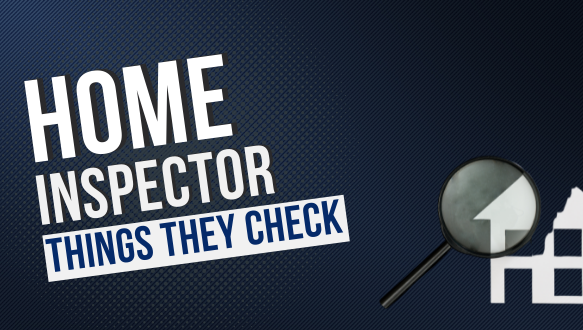What a Home Inspection Involves
39 Things a Home Inspector Checks
What does a home inspection involve? There are dozens of features that a home inspector will examine to ensure the home's safety and habitability. Here are some of the things you can expect your inspector to check out.

Outside
- Puddles/standing water: Puddles or standing water could indicate a drainage problem.
- A shed: Shed walls should be solidly built, and doors must open and shut smoothly.
- Retaining walls: Leaning retaining walls might show instability in the ground.
- Fences: Fences should be standing straight.
- Paths: Buckling or crooked pathways are another indication of draining issues.
- Deck/patio: Decks and patios must be free of holes and have adequate railings.
- Trees and shrubs: Trees overhanging your roof or shrubs planted too close to the house might be flags.
- Roof: The roof should be free from holes; materials should be in decent shape, and vents should be free and clean.
- Gutters and drainage: Gutters should be secured to the roof, clear from debris, and draining away from the house.
- Siding: The siding material will get a look for any signs of aging or damage, and to ensure the walls are straight.
Inside
- Basement: Basements and crawl spaces will be inspected for moisture and pests.
- Foundation: Foundation problems can make or break a sale; the inspector will check for stability and leaks.
- Mold/mildew: Mold and mildew could mean a leaky foundation.
- Plumbing or pipes: Any visible damage to your plumbing pipes, or stains around the materials, will be noted in the report.
- Water heaters: The inspector will note the size of the water heater, note its ventilation and set temperature, and check for any signs of rust.
- Attic: Inspectors will check for mold and mildew, leakage, and more in the attic.
- Insulation: The attic is one of the best places to see if insulation is the right type and has been installed correctly.
- Front door: Crooked door frames or doors that stick can indicate a foundation problem.
- Windows: Inspectors will make sure windows open and close smoothly.
- Walls: Leaning or tilted walls could show a structural problem with the house.
- Ceilings: Water stains on the ceiling mean that water is leaking somewhere in the house.
- Heat/cooling sources: Is the heat or cooling adequate for this part of the country?
- Fireplace/chimney: The inspector will check for cracks or damage in the fireplace or chimney.
- Kitchen
- Range hood or exhaust fan: Your kitchen needs to be well-ventilated, so inspectors will check for that.
- Outlets by sink: Any outlets by the kitchen sink must have a ground fault circuit interrupter.
- Kitchen sink: The kitchen sink should have adequate water pressure, and should be free of any leaks or stains underneath.
- Appliances: Any built-in appliances will get a once-over to make sure they operate properly and aren’t causing any issues.
- Cabinets drawers: Cabinets and drawers that don’t open or close smoothly can be another indication that the home’s foundation is shifting.
- Bathroom
- Toilets: Not only should toilets operate, but they also need to be secured.
- Shower: The shower drains and water pressure, tiles and caulking, and flooring will all be examined.
- Tub: Inspectors will check bathtubs for drainage, any signs of leaks or damage, and water pressure.
- Garage doors: Do the garage doors open and close properly, and is the garage structurally sound?
- Electrical
- Visible wiring: Visible wiring is usually OK, but it has to be secured and protected, with no visible splices.
- Electrical panel: The electrical panel must be the correct size for the home, and the connections must be in good order.
- Outlets: Inspectors will note the number of outlets in each room and whether that number is adequate.
- Light switches: Are all the light switches operational? You can expect your inspector to check.
- General safety
- Operational smoke/carbon monoxide detectors: Do the smoke and carbon monoxide detectors work? (Yes, the inspector is going to set them off to check!)
- Level floors: The floors should be level and free of cracks, stains, or signs of damage.
- Stairs: Stairs should have solid risers and tread, with no loose boards or other issues, and hand railings (if necessary).
Categories
Recent Posts

Getting Your Home Winter-Ready: Tips for a Cozy and Energy-Efficient Season

Military and Veteran Resources in the Mat-Su Valley and Beyond

Discover the Vibrant Arts and Culture Scene in Matsu Valley, Alaska: Your Ultimate Guide to Music, Theatre, Crafts, and Libraries

Unleashing Adventure: Outdoor Recreation in Mat-Su Valley, Alaska

The Best Ways to Get Active in the Mat-Su Valley

Discover Your Dream Home in Alaska: A Luxurious Oasis with Modern Upgrades

Matsu Valley Museums & Attractions

Tips for Moving to Anchorage, Alaska

Trendy Fall Home Decor Ideas

9 Deep-Cleaning Tips for New Homeowners

